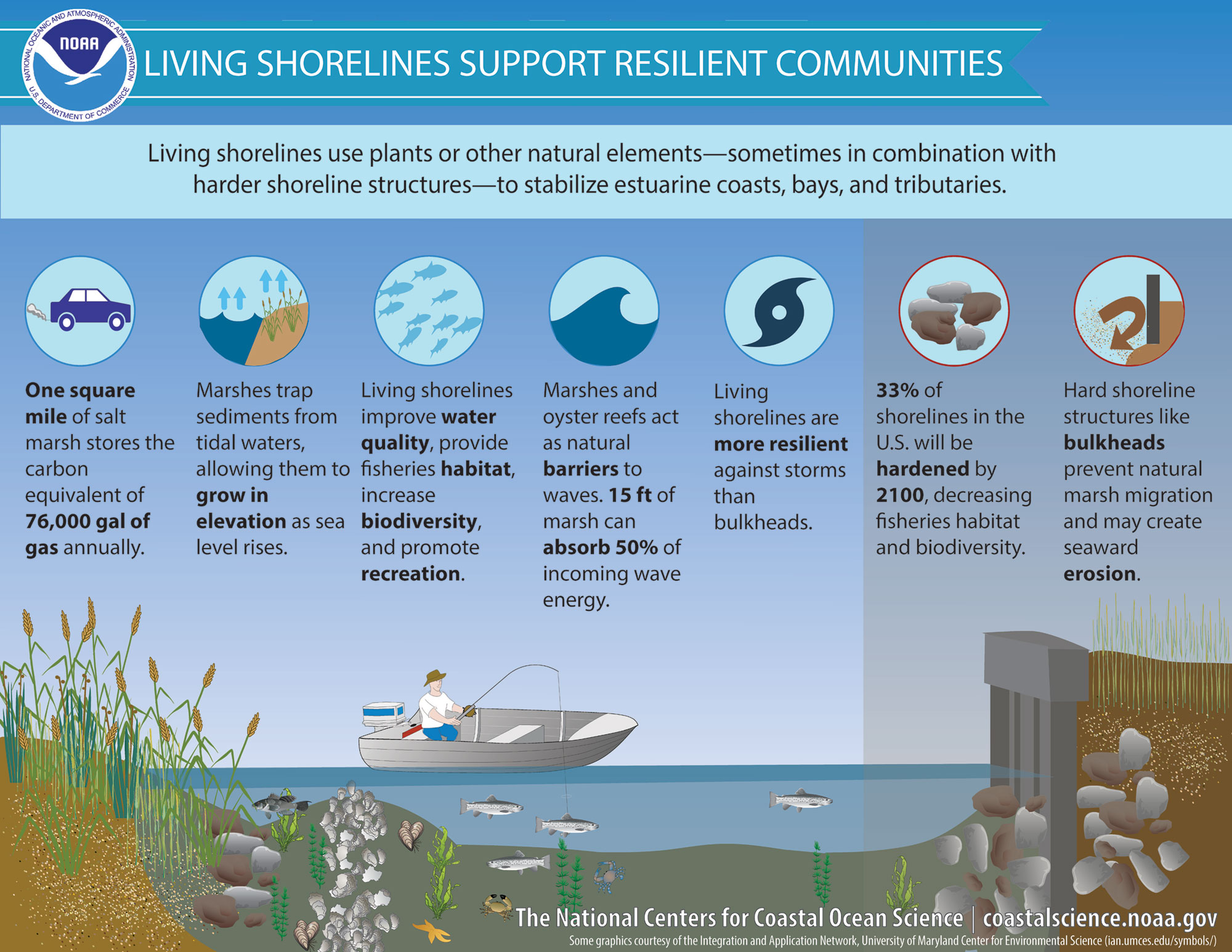How Shore Protect Team can Save You Time, Stress, and Money.
Table of ContentsShore Protect Team Can Be Fun For AnyoneThe 10-Second Trick For Shore Protect TeamWhat Does Shore Protect Team Mean?Unknown Facts About Shore Protect Team4 Simple Techniques For Shore Protect Team8 Simple Techniques For Shore Protect Team
Living shorelines make use of all-natural materials such as plants, sand, rock, or oyster shells. Over time, living coastlines can become extra secure as plants and root systems grow and establish.They usually use marginal to no ecological benefits. shoreline protection. Hardened shorelines often tend to deteriorate over time since of wear and tear from waves and storms, and they can incur greater upkeep costs if they need significant repairs.
Some Known Details About Shore Protect Team


Growing indigenous greenery like dune lawn is an effective approach to coastline disintegration control. In areas where sand has currently been significantly deteriorated, sand replenishment is a sensible strategy for reconstruction.
Some Known Details About Shore Protect Team
They limit the transportation of shoreline sediment by recording the longshore present and are constructed to secure lengthy stretches of land from erosion. Sediment that is cleaned down the coast is gathered on the updrift side of the structure. Breakwaters are structures constructed alongside the coast that "break" waves, decreasing the effect on the vulnerable sediment of the shoreline.
Made from rock and debris, breakwaters are typically submerged underwater yet occasionally can be seen from above. Bulkhead construction. This disturbance of waves decreases the severity of coastline disintegration. Seawalls, also referred to as retaining wall surfaces, play a substantial role in coastline remediation. Generally made from difficult materials like rock, wood, and concrete, they protect versus tornado rises and are often made in emergencies because of their performance and quick construction.
A Biased View of Shore Protect Team
Dunes are sand reservoirs that act as obstacles against wind and water to maintain coastlines undamaged. Flooding bags like TrapBag can be used to maintain dunes and reinforce the ecosystem of shorelines. Since sand is such a light-weight substance, it is easily blown or purged away by wind and water.
Global increasing sea degrees posture a risk to dune throughout the world, but TrapBag can decrease erosion by enhancing the dunes at their core and shielding dunes from low-lying wind gusts. TrapBag can be utilized to produce seawalls and various other coastline erosion defense structures. Coastline erosion control needs durable items that will not pave the way when faced with heavy wind and rough waves, and TrapBag's high-strength fabric layout fits the bill.

Shore Protect Team Things To Know Before You Get This
Ensures compliance with Georgia's Coast Protection Act, controling activities near dunes and coastlines. Discover answers to usual questions concerning seaside permits, revocable licenses, and other essential info.
If you are intending any construction or task in or near salt marsh in the State of Georgia, you need to contact our workplace for an administrative determination and to figure out if you require a CMPA license for your task. The Shore Security Act (HEALTH SPA) regulates activities and structures in administrative coastline and shore locations.
Because 1982, the North Carolina Coastal Federation has worked to protect and restore the coastal water top quality and habitats of North Carolina. We engage people from all profession, both residents and site visitors, who are devoted to protecting the North Carolina coastline for existing and future generations. Whether you live and deal with the shore, visit from time to time, or just dream of strolling along our beautiful coastlines, the wellness of your world depends on healthy and balanced seas and coastal ecological communities.
Indicators on Shore Protect Team You Need To Know
We involve people from all profession, both residents and site visitors, to help us protect and restore the coastline for current and future generations. is the Federation's award-winning, everyday, information solution covering the environmental information of the North Carolina coastline. Coverage consists of scientific research advancements, federal government, and governing activities, and education and learning, in addition to the environment, society, and background of the state's 20 seaside regions.
Content choices are made individually of the publisher and any type of various other individuals or passions. Introduced in 2012, Coastal Review has actually belonged to the North Carolina Press Association considering that 2015. In 2021, journalism association recognized Coastal Evaluation with a first-place award for civil service, in addition to a first-place honor for look and design and second-place awards for area protection and general quality.